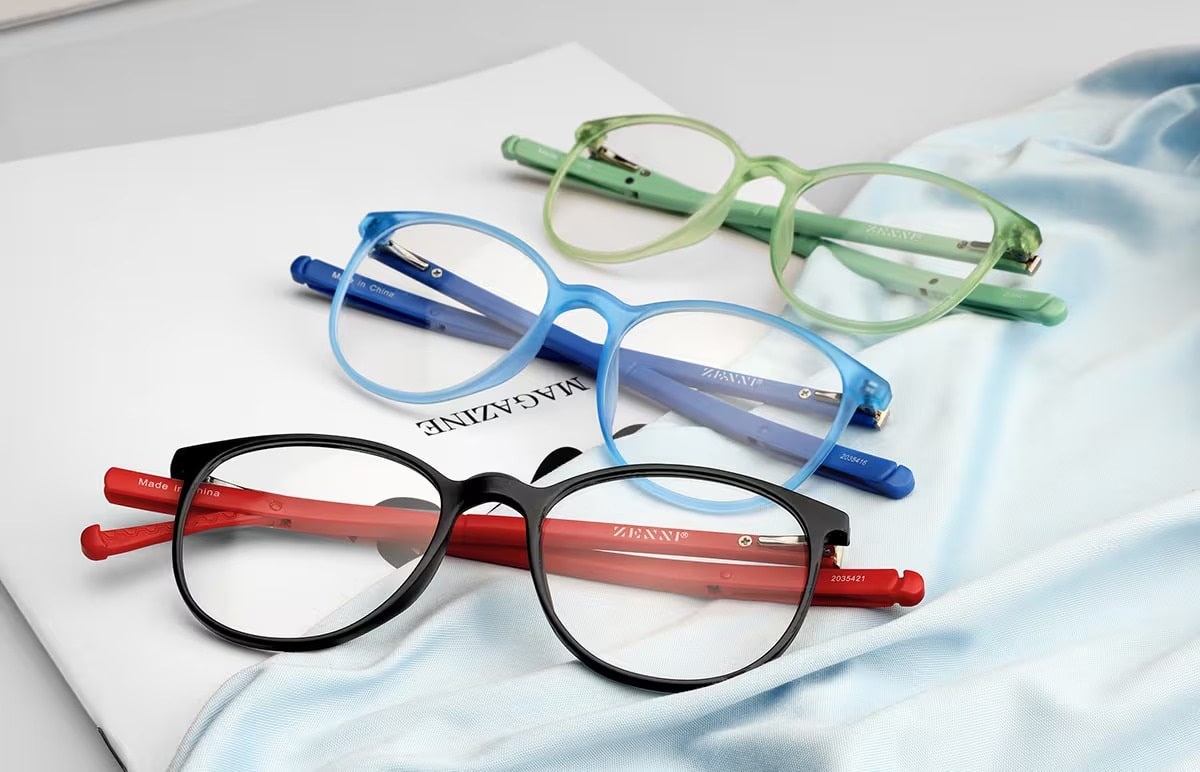1
HOME > Tips & Advice >
HELPING YOUR CHILD CHOOSE THEIR GLASSES: 6 KEY TIPS
Written by Menswear Style in Tips & Advice on the 27th July 2024

Choosing the right pair of glasses for your child can be a daunting task, but it's an essential step in ensuring their comfort and confidence. With so many styles, materials, and features available, parents often find themselves overwhelmed by the options. This guide aims to simplify the process by providing you with six key tips that will help you navigate the myriad of choices available. By taking into account your child's unique needs, preferences, and lifestyle, you can make an informed decision that not only enhances their vision but also empowers them to express their individuality through their eyewear. Let's explore how to make this journey a little easier and more enjoyable for both you and your child.
1. Understand Your Child’s Prescription
Before diving into the world of frames, it’s crucial to have a clear understanding of your child’s eye prescription. Visually interpreting the prescription can sometimes be complicated, but it typically includes details about the type of correction needed, including spherical, cylindrical, and axis measurements. Take the time to discuss these aspects with your optometrist, so you can grasp how they impact the type of lenses your child may require. Once you understand the prescription, consider your child’s daily activities. Are they particularly active or do they spend long hours reading and using screens? Knowing how their eyesight impacts their routine can help you select lenses that offer the proper protection and functionality, such as anti-reflective coatings or blue light filters. From sports glasses for kids who are constantly on the move to computer glasses for avid gamers, there’s a wide range of specialized lenses available to cater to your child's unique needs. It’s also essential to keep in mind that your child’s prescription may change over time, so regular check-ups are crucial to ensuring their glasses remain effective.

2. Consider Frame Material and Durability
When selecting glasses for your child, the material of the frames is an important factor. Frames made from lightweight plastic or flexible polymer are often recommended for younger children due to their ability to absorb impacts and resistance to breakage. Metal frames can be a stylish choice, but they may not withstand rough play as effectively as their plastic counterparts. Think about the age and personality of your child. If they are prone to losing or damaging items, prioritizing durability should be a key consideration. Look for frames marketed as kid-proof or those that come with warranties, providing extra peace of mind as your child navigates their day.
3. Find the Right Fit
A good fit is essential for comfort and effectiveness. Take the time to measure your child’s face and consult measurement guides provided by eyewear retailers. Glasses that sit too high or low, or that pinch around the ears, can lead to discomfort or frequent adjustments, making wearing them challenging for your child. Most importantly, involve your child in the fitting process. Let them try on different styles and sizes to discover what feels good. Engaging your child in this decision not only ensures comfort but also allows them to feel a sense of ownership over their eyewear, which can enhance their confidence.

4. Explore Frame Styles
Once you have the right fit and materials in mind, it’s time to explore frame styles. Consider your child’s personality and interests: do they prefer bold colors and unique patterns, or are they more inclined toward classic designs? Many brands now offer a variety of options, so there’s likely something that will resonate with your child’s sense of style. Introducing your child to various styles can also be an opportunity for self-expression. Encouraging them to pick out a frame they love can foster ownership and pride in wearing their glasses. A well-chosen pair can even encourage them to wear them consistently, which is crucial for their vision.
5. Think About Lens Options
Different lenses offer diverse functionalities that can enhance visual acuity and comfort. For instance, if your child is active outdoors, consider photochromic lenses that darken in sunlight and clear up indoors. This feature not only protects their eyes from harmful UV rays but also eliminates the need for a separate pair of sunglasses. Anti-scratch and anti-reflective treatments can greatly enhance the longevity and usability of the lenses. Speak with your eye care provider about what options may be best suited to your child’s lifestyle, ensuring their glasses are both practical and effective.

6. Set a Budget
Setting a budget is a crucial aspect of the decision-making process when selecting glasses for your child. Prices can vary significantly based on frame style, lens type, and brand, so it’s essential to determine how much you're willing to invest before shopping. Remember, while it’s important to stay within budget, investing in quality eyewear can lead to better long-term satisfaction. Don’t forget to consider additional factors such as insurance coverage, warranties, and the possibility of needing an experienced eye care provider. By being mindful of your budget, you can make choices that align with both your financial and eyewear needs without sacrificing quality or style.
Choosing glasses for your child can be an exciting and rewarding experience with the right approach. By understanding their prescription, prioritizing durability and fit, exploring different styles, and considering lens options and budget, you can make a confident decision that will benefit your child in both vision and self-expression. Remember to involve your child throughout the process, as their happiness and comfort are ultimately what matters most. With these key tips in mind, you can embark on this journey with confidence and find a pair of glasses that your child will love wearing!
Trending
2
3
4
5
6
7
8
9
10









